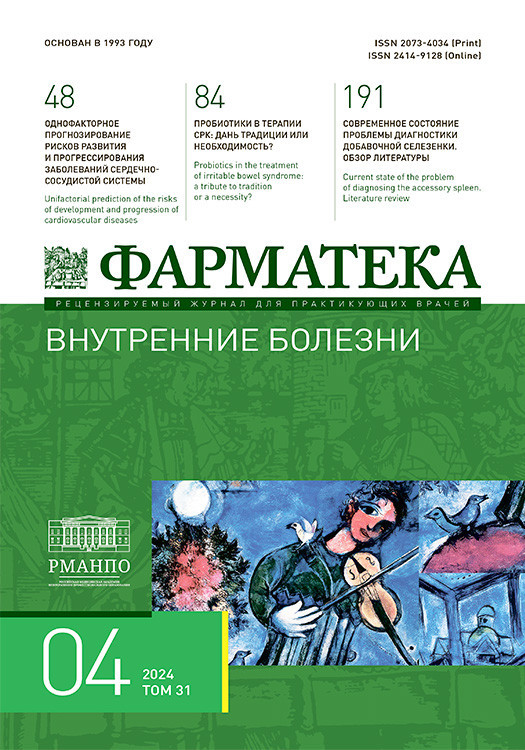Unifactorial prediction of the risks of development and progression of cardiovascular diseases
Background. Prevention of cardiovascular diseases requires early identification of people at high risk so that effective dietary, lifestyle, or drug interventions can be implemented.Derbeneva S.A., Pogozheva A.V., Shmeleva S.V., Sabanchieva Zh.Kh.
Objective. Evaluation of the clinical, instrumental and laboratory parameters as markers of the development and progression of cardiovascular diseases (CVDs).
Methods. Assessment of actual nutrition and physical activity at home, anthropometric studies, assessment of body composition, study of energy metabolism with determination of daily nitrogen excretion, study of indicators of resting metabolism and macronutrient metabolism. Laboratory studies included the general blood test, clinical urinalysis, analysis of biochemical markers of lipid, protein and carbohydrate metabolism, parameters of the functional activity of the hepatobiliary system, blood coagulation system, hormonal profile indicators, electrolyte metabolism, vitamin status, lipid peroxidation products and enzymes of the antioxidant protection system.
Results. In 956 patients with cardiovascular diseases, specific factors predicting the development of coronary artery disease (CAD) were identified: silent myocardial ischemia, post-infarction cardiosclerosis, condition after surgical treatment, angina pectoris 1 functional class. Prediction of the risk of developing a particular clinical event from specific quantitative or binary indicators of the metabolic status of patients was carried out using the Pearson Chi-square test.
Conclusion. In one clinical case of CAD, biomarkers of metabolic status were identified as key, in another case – parameters of the clinical course of atherosclerotic disease, in the third and fourth – their combination. Taking into account the presence of these factors, it is possible to carry out measures for their adequate and timely correction, thereby preventing the development and progression of these nosological forms.
Keywords
cardiovascular diseases
prognosis
coronary artery disease
risk factors



